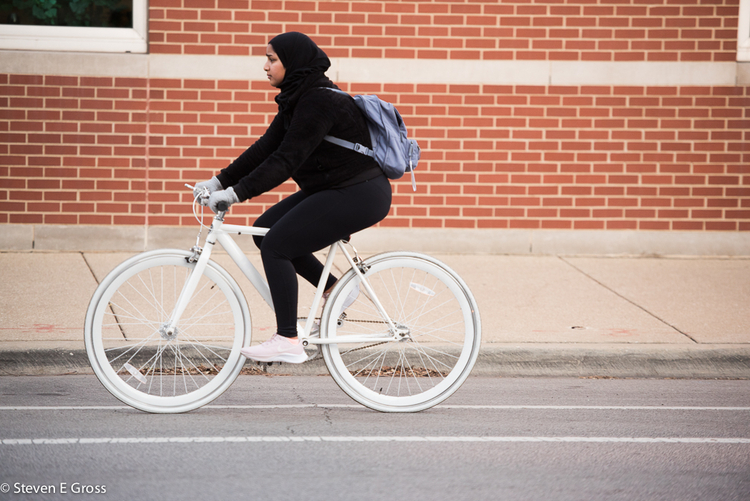The Chicago Tribune recently reached out to readers, including the Active Transportation Alliance, to share their thoughts on the state of cycling in Chicago.
As an organization that has been working to improve conditions for cyclists, pedestrians, and transit users in the Chicagoland area for nearly 40 years, we had valuable insights to contribute to this important discussion.
Our advocacy manager, Alex Perez, took on the task of crafting a letter that encapsulated our organization’s perspective on the current state of cycling in Chicago. This letter was part of a collection of responses from various stakeholders and cycling enthusiasts published by the Tribune.
The timing of this request was particularly relevant, given recent developments in Chicago’s cycling infrastructure and ridership.
Here’s the letter published by the Tribune.
Dear Editor,
Chicago’s streets are at a crossroads, and the path we choose will determine the safety and vitality of our city for generations to come. We’ve seen how thoughtfully designed bicycle infrastructure can transform neighborhoods, connecting communities and breathing new life into our urban landscape. We’ve seen a growing number of protected bike lanes and we’ve seen many of them given concrete protection. CDOT’s community-driven approach to expanding Chicago’s bike network has brought new bike infrastructure to neighborhoods that historically had few bike lanes, such as Belmont Cragin, Hermosa, Austin, North Lawndale, and South Lawndale.
Despite pockets of progress, our city’s overall efforts to create safe, accessible cycling networks are falling dangerously short. The harsh reality is that this piecemeal approach to bicycle infrastructure is costing lives.
Bike infrastructure is only effective when it truly delivers on its promise of safety. The reality in Chicago is far from ideal. Too often, drivers illegally park or stop in bike lanes, forcing cyclists to suddenly swerve into traffic—a potentially life-threatening maneuver. Fortunately, the city’s forthcoming Smart Streets program will crack down on these violations, using technology to enforce parking rules in bike lanes, bus lanes, and no-parking zones.
In addition to creating safe and effective infrastructure for biking, we must also reduce Chicago’s default speed limit. When drivers kill or injure people biking or walking, it’s often the result of a driver going too fast. With higher speeds, the likelihood of severe injuries or fatalities skyrockets. Because of the role speed plays in crashes, lowering the speed limit even a small amount can have an outsized effect on road safety.
We envision a Chicago where every neighborhood is connected by a network of protected bike lanes, where families can safely pedal to schools and parks, and where commuters can choose two wheels over four without fear. This isn’t just a dream – it’s a necessity for a modern, sustainable city.
The benefits of a robust cycling network extend far beyond safety. More people biking means less traffic congestion, better air quality, and healthier residents. Not only does it expand affordable transportation options, but it serves as an investment in our well-being and our city’s future.
We need bold action to transform Chicago into the world-class cycling city it has the potential to be. Lives depend on it, our environment demands it, and our future generations deserve it.
Sincerely,
Alex Perez
Advocacy Manager
Active Transportation Alliance

